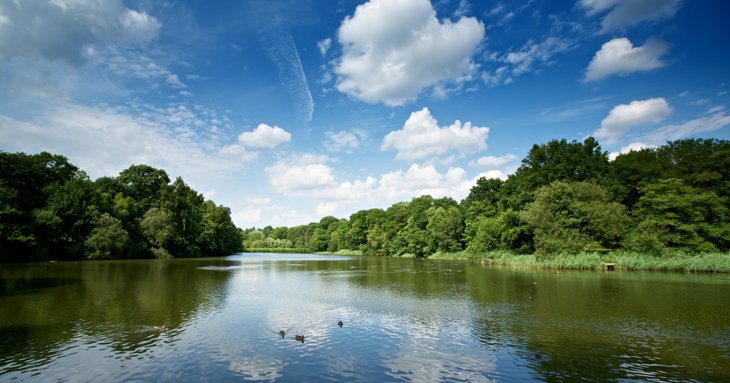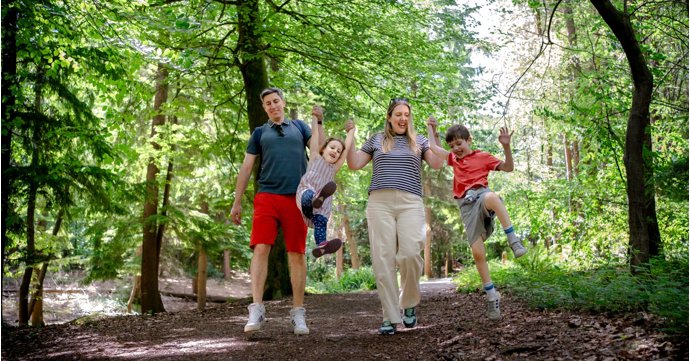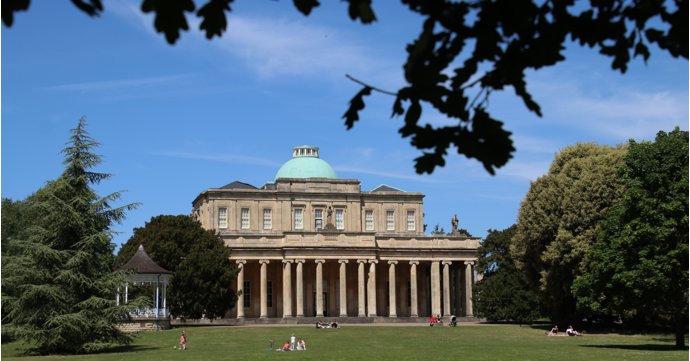Forestry England Forest of Dean is considering rewilding Cannop Ponds after concerns were raised about the condition of its 200-year-old dams and their resilience to climate change.
Looking at the needs of the ponds themselves, as well as the needs of the wider forest, Forestry England is consulting with experts on the best course of action to ensure their long-term safety.
Upper and Lower Cannop Ponds are defined as reservoirs under the Reservoirs Act 1975 and hold over 25,000 cubic metres of water each. After recent inspections by independent reservoir engineers, some significant issues were raised – including the need to manage increased water volumes, more intense storms and more frequent flooding in the future.
If one of the dam walls were to be breached, the impact on the forest and its communities downstream could be significant, with Parkend, Whitecroft and Lydney identified as vulnerable to flooding.
And while it’s important to reinforce that the dams are not about to fail and nobody living or working in the area should have any immediate concerns, Forestry England must consider that failure in the future may be possible and steps must be taken now to protect the forest for future generations.
There are a variety of options for Cannop Ponds, including repairing the dams – which will involve the construction of a new spillway and extensive works to prevent further leakage through the existing dam – or removing them altogether and rewilding the site, returning it to its former state as a natural valley, as it was in the early 1800s, before the reservoirs were created to supply water to Parkend Ironworks.
Forestry England's deputy surveyor for the Forest of Dean, Kevin Stannard, said: ‘Our climate is changing and we are already seeing changes in rainfall patterns that have led to increased storm flows on the Cannop Brook. Climate projections show that we can expect more winter rainfall and more intense storms, which the ageing dams may not be able to cope with.
‘While a breach is not envisaged imminently, it cannot be ruled out for the future, so doing nothing is not an option. We must explore possibilities to improve the forest’s ability to withstand the extremes of our changing climate, whilst also improving the conditions for wildlife as we face up to the biodiversity crisis.’
The Forest of Dean’s land management plan ‘Our Shared Forest’ will play a key part in the process, ensuring decisions are ‘guided by the natural potential of the land, as well as the varied influences of our ever-changing world’ and follow the ‘agreed, understood and supported direction for what the forest will look like, feel like and be like in 100 years’ time’.
The plan considers all aspects of the forest, including cultural issues, as well as the environment, encompassing geology, trees, soils, water and wildlife, and states that ‘water in the Forest should no longer require anything but the most minor interventions for natural processes to function and for a healthy water environment to prevail’ – which reinforces Forestry England’s case for considering rewilding the area.
While rewilding the site would be a huge project and not a decision to be taken lightly, this approach has the potential to create exciting opportunities for the forest’s flora and fauna.
Forestry England will work with London-based design engineering consultants, Arup, throughout summer 2022 to confirm if rewilding the site is a viable option – and whether key stakeholders would support the idea – before sharing its findings with the public and engaging with residents in the Forest of Dean on future plans.
For more information, visit forestryengland.uk.




















